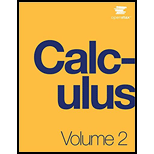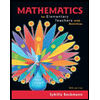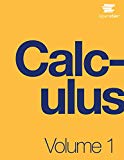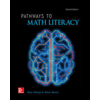

To check: Whether the given statement is true or false and also justified it.
Answer to Problem 408RE
The given statement is false because
Explanation of Solution
Given information:
The given statement is, “
Concept used:
Integration by parts,
Calculation:
Consider
Let
And
So, using integration by parts, we get
Therefore, using again integration by parts, we get
After adding
Thus,
Here, C is constant of integration.
Conclusion:
Hence,
Want to see more full solutions like this?
Chapter 3 Solutions
Calculus Volume 2
Additional Math Textbook Solutions
Calculus Volume 1
Introductory Statistics
Thinking Mathematically (6th Edition)
Mathematics All Around (6th Edition)
Using & Understanding Mathematics: A Quantitative Reasoning Approach (7th Edition)
Probability and Statistics for Engineers and Scientists
 Discrete Mathematics and Its Applications ( 8th I...MathISBN:9781259676512Author:Kenneth H RosenPublisher:McGraw-Hill Education
Discrete Mathematics and Its Applications ( 8th I...MathISBN:9781259676512Author:Kenneth H RosenPublisher:McGraw-Hill Education Mathematics for Elementary Teachers with Activiti...MathISBN:9780134392790Author:Beckmann, SybillaPublisher:PEARSON
Mathematics for Elementary Teachers with Activiti...MathISBN:9780134392790Author:Beckmann, SybillaPublisher:PEARSON
 Thinking Mathematically (7th Edition)MathISBN:9780134683713Author:Robert F. BlitzerPublisher:PEARSON
Thinking Mathematically (7th Edition)MathISBN:9780134683713Author:Robert F. BlitzerPublisher:PEARSON Discrete Mathematics With ApplicationsMathISBN:9781337694193Author:EPP, Susanna S.Publisher:Cengage Learning,
Discrete Mathematics With ApplicationsMathISBN:9781337694193Author:EPP, Susanna S.Publisher:Cengage Learning, Pathways To Math Literacy (looseleaf)MathISBN:9781259985607Author:David Sobecki Professor, Brian A. MercerPublisher:McGraw-Hill Education
Pathways To Math Literacy (looseleaf)MathISBN:9781259985607Author:David Sobecki Professor, Brian A. MercerPublisher:McGraw-Hill Education





